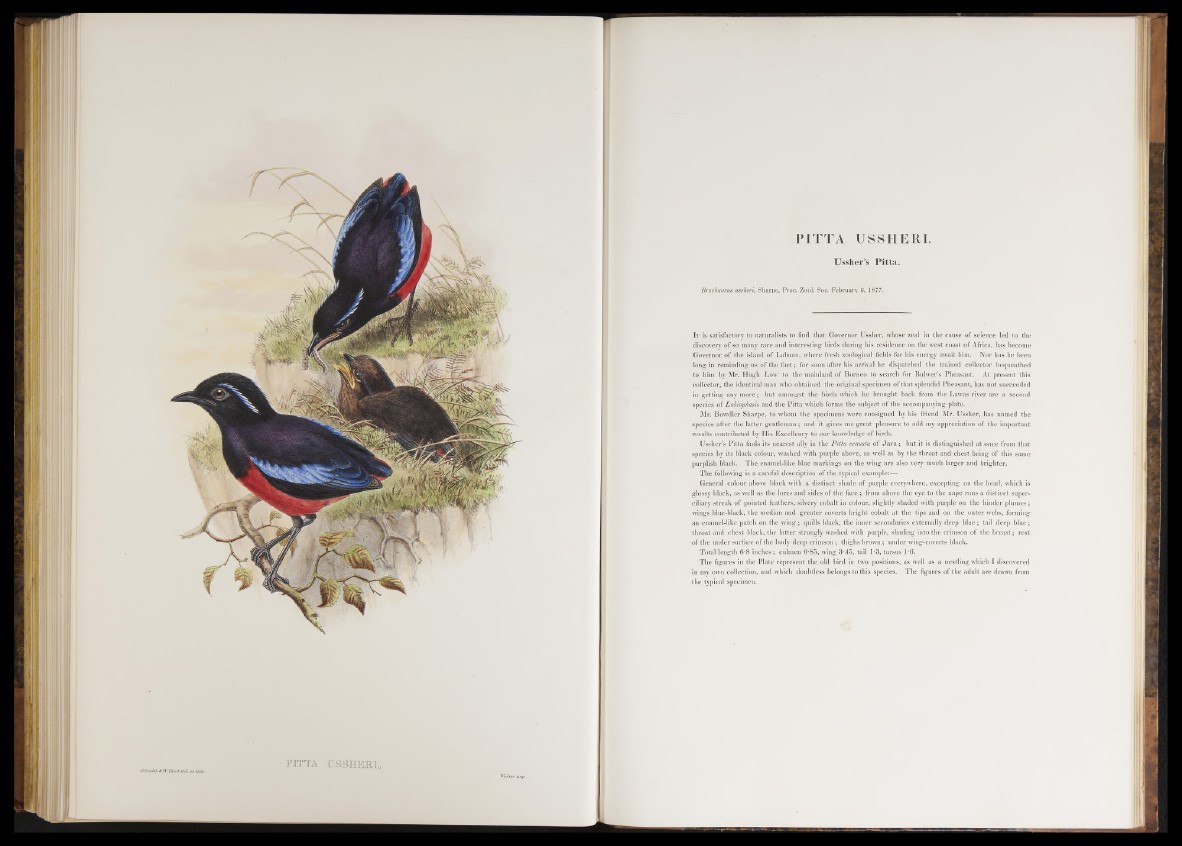
PITTA USSHERI .
Ussher’s P itta .
Brachyurus ussheri, Sharpe, Proc. Zool. Soc. February 6, 1877.
I t is satisfactory to naturalists to find that Governor Ussher, whose zeal in the cause of science led to the
discovery of so many rare and interesting birds during his residence on the west coast of Africa, has become
Governor o f the island of Labuan, where fresh zoological fields for his energy await him. Nor has he been
long in reminding us of the fa c t; for soon after his arrival he dispatched the trained collector bequeathed
to him by Mr. Hugh Low to the mainland of Borneo to search for Bulwer’s Pheasant. At present this
collector, the identical man who obtained the original specimen o f that splendid Pheasant, has not succeeded
in getting any m ore; but amongst the birds which he brought back from the Lawas river are a second
species of Lobiop/asis and the Pitta which forms the subject of the accompanying plate.
Mr. Bowdler Sharpe, to whom the specimens were consigned by his friend Mr. Ussher, has named the
species after the latter gentleman ; and it gives me g reat pleasure to add my appreciation of the important
results contributed by His Excellency to our knowledge of birds.
Ussher’s Pitta finds its nearest ally in the Pitta venusta o f J a v a ; but it is distinguished at once from that
species by its black colour, washed with purple above, as well as by the throat and chest being of this same
purplish black. Tbe enamel-like blue markings on the wing are also very much larger and brighter.
The following is a careful description of the typical example:—
General colour above black with a distinct shade of purple everywhere, excepting on the head, which is
glossy black, as well as the lores and sides of the face ; from above tbe eye to the nape runs a distinct superciliary
streak of pointed feathers, silvery cobalt in colour, slightly shaded with purple on the hinder plumes;
wings blue-black, the median and greater coverts bright cobalt a t the tips and on the outer webs, forming
an enamel-like patch on the win g ; quills black, the inner secondaries externally deep blue; tail deep blue;
throat and chest black, the latter strongly washed with purple, shading into the crimson of the breast; rest
of the under surface of the body deep crimson; thighs brown; under wing-coverts black.
Total length 6‘8 inches; culmen 0-85, wing 3 -45, tail 1*3, tarsus l -6.
The figures in the Plate represent the old bird in two positions, as well as a nestling which I discovered
in my own collection, and which doubtless belongs to this species. The figures of the adult are drawn from
the typical specimen.